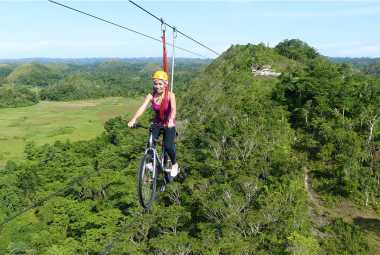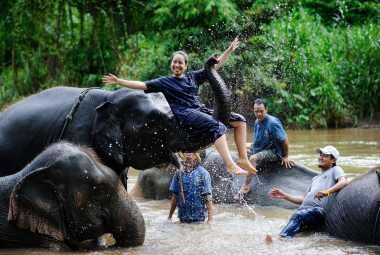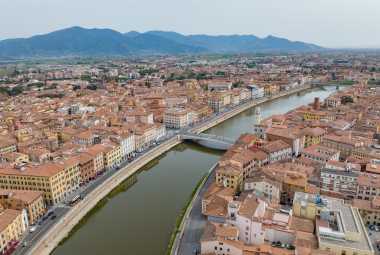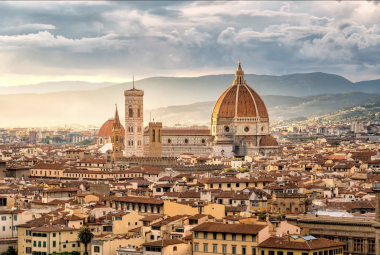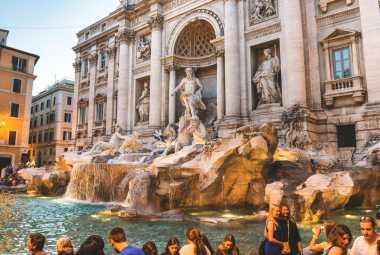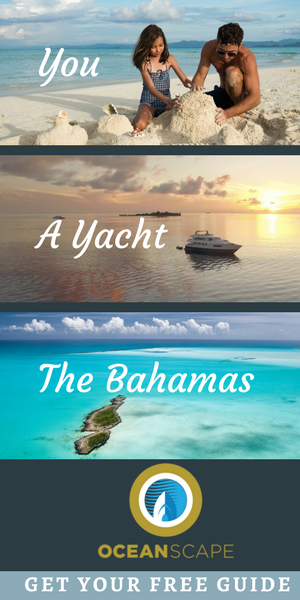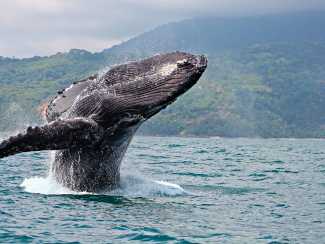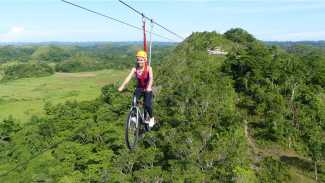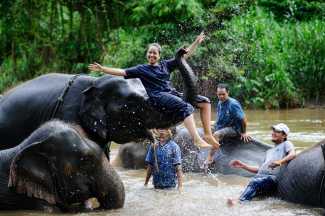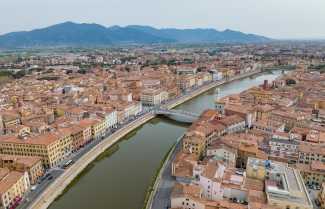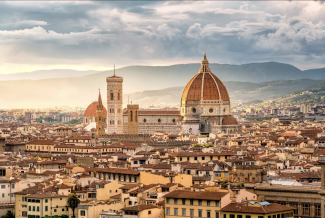Image by Bernard Gagnon
*Vacation Mode is a for-profit site. It contains paid banner advertisements that are generated and managed by a third-party network. This site also includes relevant affiliate links (both in the content and on the sidebar) all of which we do our best to clearly mark as such.
"Costa Rica and Madagascar are two captivating destinations known for their unique landscapes, biodiversity, and cultural heritage. Both countries offer a diverse range of attractions and experiences for travelers. To help you make an informed decision, let's explore the geography and climate, natural attractions, cultural heritage, activities and adventure, as well as safety and travel considerations of both Costa Rica and Madagascar."
"Geography and Climate:
Costa Rica boasts a stunning geography with lush rainforests, active volcanoes, and pristine beaches. The country is located in Central America and is known for its tropical climate characterized by distinct dry and wet seasons."
"In contrast, Madagascar, an island located off the eastern coast of Africa, is renowned for its extraordinary biodiversity and unique landscapes. It features diverse geographical features, including rainforests, deserts, mountains, and stunning coastlines. The climate in Madagascar varies from tropical rainforest in the east to arid conditions in the southwest."
"Natural Attractions:
Costa Rica is home to numerous natural attractions, such as the iconic Arenal Volcano, the Monteverde Cloud Forest Reserve, and the Manuel Antonio National Park. The country has a rich wildlife population, with opportunities to spot exotic species like toucans, sloths, and monkeys."
"Similarly, Madagascar is famous for its unparalleled natural beauty, including the Avenue of the Baobabs, the Tsingy de Bemaraha Strict Nature Reserve, and the lush Ranomafana National Park. Madagascar is known for its extraordinary biodiversity, with lemurs, chameleons, and rare plant species found nowhere else on Earth."
"Cultural Heritage:
Costa Rica is proud of its cultural highlights, which include a vibrant art scene, traditional music and dance, and a strong commitment to environmental conservation. Indigenous cultures, such as the BriBri and Maleku people, contribute to the cultural diversity of the country."
"Madagascar also has a rich cultural heritage, with influences from various Southeast Asian, African, and Arab cultures. The country is home to numerous indigenous tribes, such as the Merina and Betsileo, each with their unique traditions, rituals, and craftsmanship."
"Activities and Adventure:
Both Costa Rica and Madagascar offer a wide range of outdoor activities and adventure opportunities. In Costa Rica, you can enjoy thrilling experiences like zip-lining through the treetops, white-water rafting down raging rivers, and surfing in world-renowned surf spots. In Madagascar, you can embark on hiking expeditions, go wildlife spotting, or indulge in snorkeling and diving to explore the vibrant marine ecosystems surrounding the island."
"Safety and Travel Considerations:
Safety is an important consideration for travelers. Costa Rica is generally considered a safe destination for tourists, with a stable political climate and a well-developed tourism infrastructure. It is advisable to take standard precautions and be mindful of petty theft in crowded tourist areas."
"Similarly, while Madagascar offers incredible experiences, it is important to stay informed about safety measures and potential risks. It is advisable to travel with a reputable guide, be cautious in urban areas, and follow the travel advisories of your home country."
"In the following sections, we will delve deeper into each of these aspects, providing you with a comprehensive comparison between Costa Rica and Madagascar, allowing you to make an informed decision for your next travel adventure."
Key takeaways:
- Costa Rica's natural attractions: Costa Rica is known for its beautiful natural attractions, including stunning beaches, lush rainforests, and diverse wildlife. Travelers can explore national parks, go hiking, and engage in eco-friendly activities.
- Madagascar's unique biodiversity: Madagascar is a biodiversity hotspot, home to numerous endemic species that cannot be found anywhere else in the world. Travelers can encounter lemurs, chameleons, and other fascinating wildlife in its national parks and reserves.
- Travel considerations: When planning a trip to either Costa Rica or Madagascar, it is important to consider safety measures, such as following local guidelines, being aware of your surroundings, and taking necessary vaccinations. Additionally, travelers should be prepared for varying climates and take precautions against mosquito-borne diseases.
Amazing Places to visit in Costa Rica
Video by Joyous Travel
Madagascar
Video by Marco Giambersi
Overview of Costa Rica
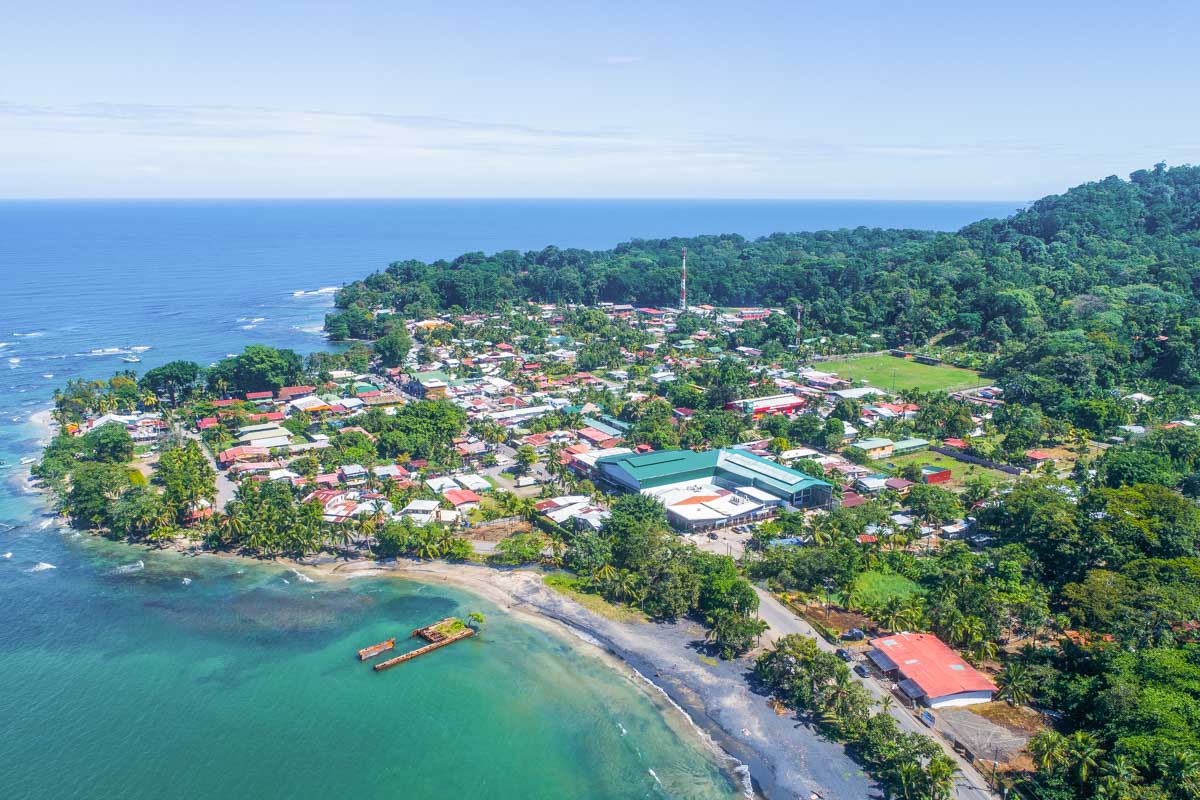
Costa Rica, a country located in Central America, offers an overview of stunning geographical features, including lush rainforests, volcanoes, and beautiful beaches. The country's climate, being part of the overview, is tropical, with a wet and dry season. Costa Rica's rich biodiversity is an essential part of the overview, attracting nature enthusiasts from all over the world. Moreover, Costa Rica boasts a strong cultural heritage that adds to its charm and should be part of the overview, with indigenous cultures and traditions. In addition to the natural and cultural highlights, the overview includes a variety of outdoor activities and adventure opportunities, such as hiking, zip-lining, and surfing. Travelers should prioritize safety measures and consider the necessary travel considerations when planning a trip to Costa Rica, which are significant aspects of the overview.
Overview of Madagascar
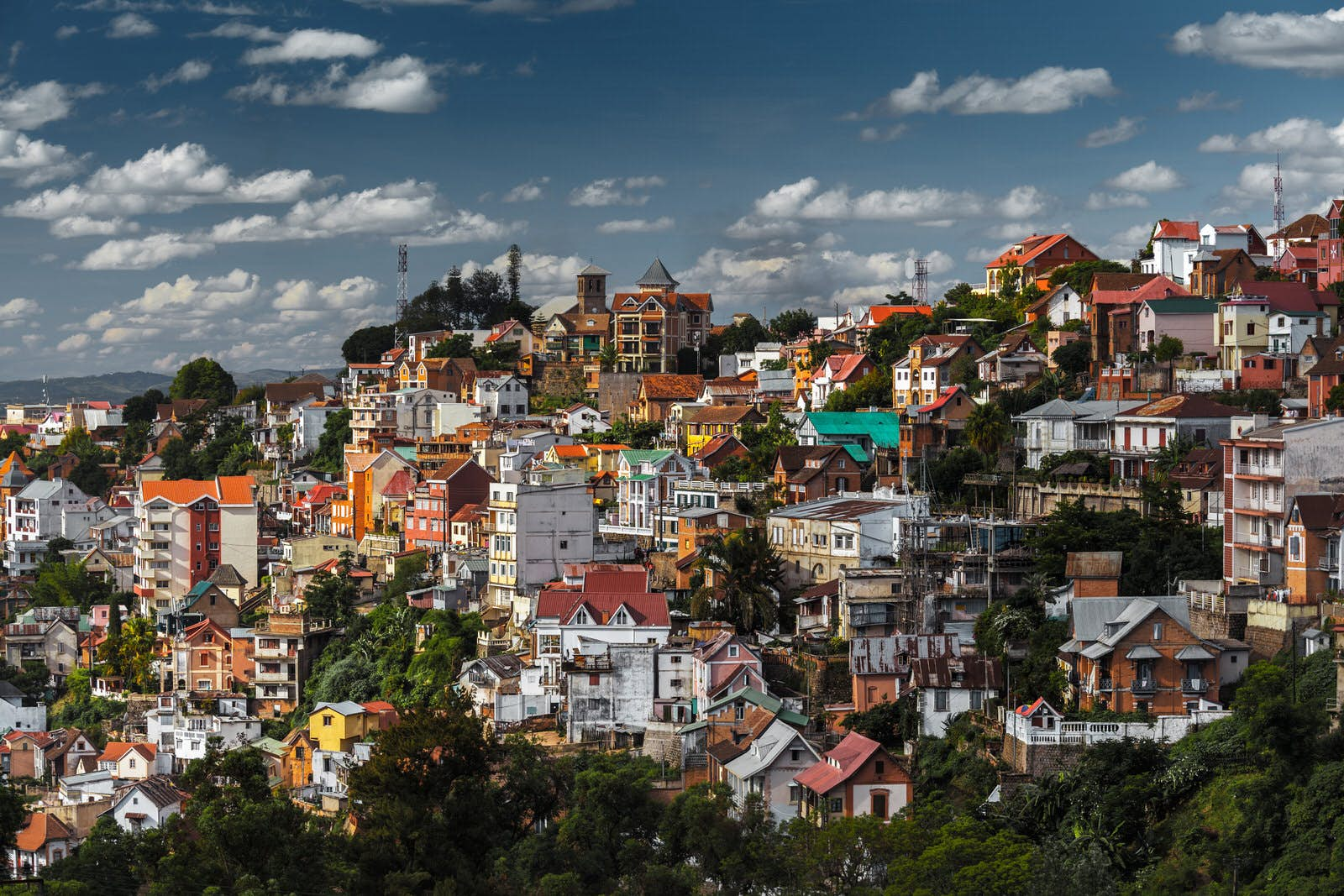
Madagascar is an island nation located off the southeast coast of Africa, known for its unique biodiversity and stunning natural landscapes. As an overview of Madagascar, the island boasts diverse geographical features, including rainforests, mountains, and beautiful coastline. The climate is tropical, characterized by distinct wet and dry seasons. Madagascar is home to various natural attractions, such as the famous Avenue of the Baobabs and the lush rainforests of Ranomafana National Park. Additionally, it has a rich cultural heritage, with indigenous cultures and traditions that continue to thrive. Visitors can engage in outdoor activities and adventurous experiences like hiking, wildlife spotting, and exploring the spectacular underwater world. When traveling to Madagascar, it is important to consider safety measures and travel considerations like any other destination.
Comparison of Costa Rica and Madagascar
| Comparison of Costa Rica and Madagascar | ||
| 1. Geography and Climate | Costa Rica | Madagascar |
| Geographical Features | Lush rainforests, volcanic mountains, pristine beaches | Diverse landscapes, rainforests, highlands, savannas |
| Climate | Tropical and subtropical, varying by elevation | Tropical, with distinct wet and dry seasons |
| 2. Natural Attractions | Popular Natural Attractions | Unique Wildlife and Biodiversity |
| Arenal Volcano, Monteverde Cloud Forest, Manuel Antonio National Park | Lemurs, baobab trees, Tsingy de Bemaraha National Park | |
| 3. Cultural Heritage | Cultural Highlights | Indigenous Cultures and Traditions |
| Traditional music, dance, and cuisine | Malagasy language, ancestral beliefs, diverse ethnic groups | |
| 4. Activities and Adventure | Outdoor Activities | Adventure Opportunities |
| Hiking, zip-lining, surfing | Trekking, wildlife safaris, diving | |
| 5. Safety and Travel Considerations | Safety Measures | Travel Considerations |
| Relatively safe, precautions for petty theft | Some areas with political instability, health precautions |
In the Comparison of Costa Rica and Madagascar, both countries offer diverse geographical features, rich natural attractions, vibrant cultural heritage, and thrilling activities. Costa Rica boasts lush rainforests and pristine beaches, while Madagascar showcases unique biodiversity with lemurs and baobab trees. Both countries have their cultural highlights and offer various outdoor activities such as hiking and diving. Travelers should consider safety measures like precautionary measures against petty theft in Costa Rica and political instability in certain areas of Madagascar. Ultimately, the choice between these two destinations depends on personal preferences and travel considerations.
Geography and Climate
With lush landscapes and diverse climates, Costa Rica and Madagascar offer fascinating geographical wonders. Let's explore the breathtaking geographical features and distinctive climates of both regions. From stunning coastlines to volcanic formations, Costa Rica boasts a rich tapestry of natural wonders. Meanwhile, Madagascar's unique biodiversity is reflected in its varied landscapes, from dense rainforests to arid plains. By comparing these geographic features and climates, we'll uncover the distinct allure of both Costa Rica and Madagascar.
Geographical Features of Costa Rica
Costa Rica is renowned for its diverse geographical features that make it a unique and stunning destination to visit. The country offers beautiful beaches, including popular surf spots, and is home to several active and dormant volcanoes, such as Arenal Volcano and Poas Volcano. Costa Rica also boasts lush rainforests, like the famous Monteverde Cloud Forest and Corcovado National Park, as well as stunning rivers and waterfalls, like La Fortuna Waterfall and Rio Celeste. Additionally, Costa Rica is characterized by mountain ranges, including the Central Mountain Range and Talamanca Range.
With its breathtaking geographical features, Costa Rica offers visitors a chance to explore a diverse and vibrant natural landscape. The country's commitment to preserving its natural resources has not only shaped its geographical features but has also contributed to its reputation as a paradise for nature lovers. Costa Rica is renowned for being a peaceful and politically stable nation that abolished its army in 1948. By redirecting funds towards education, healthcare, and conservation, Costa Rica has become a global leader in environmental sustainability and eco-tourism. Thus, it is no wonder that Costa Rica is known for its unparalleled geographical features.
Climate of Costa Rica
Costa Rica has a tropical climate, and the Climate of Costa Rica has two distinct seasons: the dry season and the rainy season. The dry season, which occurs from December to April, brings clear skies and warm temperatures to the country. In contrast, the rainy season, which takes place from May to November, sees frequent rainfall in the afternoons. Due to its diverse topography and location between the Pacific Ocean and the Caribbean Sea, the Climate of Costa Rica varies across different regions. This variation in climate is what makes Costa Rica ideal for lush rainforests, vibrant wildlife, and a wide range of outdoor activities. When visiting Costa Rica, travelers can enjoy activities such as hiking, surfing, and exploring the country's numerous national parks and nature reserves, all thanks to the favorable climate. Overall, the Climate of Costa Rica offers pleasant conditions for travelers seeking a tropical getaway.
Geographical Features of Madagascar
Madagascar, located off the southeastern coast of Africa, boasts diverse geographical features. The island country is renowned for its unique landscapes, comprising dense rainforests, towering mountains, and vast grassy plains. The eastern coast showcases stunning white-sand beaches, while the western coast exhibits dramatic cliffs and coral reefs. In addition, Madagascar proudly harbors the world's fourth-largest island, the Tsaratanana Massif. These remarkable geographical features contribute to the exceptional biodiversity found in Madagascar, making it a haven for numerous rare and endemic species.
Climate of Madagascar
Madagascar's climate is characterized by the Climate of Madagascar with distinct wet and dry seasons. The island experiences a hot and humid climate throughout the year, with temperatures averaging around 25 to 30 degrees Celsius. The wet season, from November to April, brings heavy rainfall and cyclones, while the dry season, from May to October, offers more pleasant weather with cooler temperatures and less humidity. The diverse geography of Madagascar contributes to variations in climate across the island, with coastal regions experiencing higher temperatures compared to the cooler highlands. The Climate of Madagascar is a crucial factor to consider when planning a visit to the country.
Comparison of Geographic Features and Climate
| Comparison of Geographic Features | Comparison of Geographic Features |
| - Volcanoes (over 200) | - Unique Baobab trees |
| - Dense rainforests | - Vast tropical forests |
| - Beautiful beaches | - Diverse landscapes (mountains, deserts, rainforests) |
| Climate | Climate |
| - Tropical climate | - Tropical climate |
| - Wet and dry seasons | - Dry and wet seasons |
| - Average temperature: 27°C | - Average temperature: 25°C |
| Comparison of Geographic Features and Climate | Comparison of Geographic Features and Climate |
Natural Attractions
When it comes to natural attractions, both Costa Rica and Madagascar hold a treasure trove of wonders. In this exciting section, we will dive into the diverse landscapes and captivating flora and fauna that make these destinations truly exceptional. Discover the popular natural attractions of Costa Rica and Madagascar, showcasing their unique wildlife and biodiversity. Brace yourself for a fascinating comparison of the two, as we unveil the captivating allure of these natural wonders. Get ready to be amazed!
Popular Natural Attractions in Costa Rica
Costa Rica is renowned for its abundant natural beauty and is famous for its Popular Natural Attractions. Visitors have a myriad of options to explore in this captivating country.
- One of the must-visit locations is Manuel Antonio National Park. This park, known for its stunning beaches and diverse wildlife, is a favorite among nature enthusiasts.
- Arenal Volcano is another captivating attraction. Here, visitors can witness the majestic volcano and unwind in the nearby hot springs, all while surrounded by lush tropical rainforests.
- The Monteverde Cloud Forest Reserve offers a unique experience in mystical cloud forests. This reserve showcases an extraordinary ecosystem teeming with exotic flora and fauna.
- Tortuguero National Park is an ideal destination to witness endangered sea turtles nesting. Visitors can also navigate through scenic canals surrounded by dense rainforest.
- For those seeking biodiversity, Corcovado National Park is a true paradise. This biodiverse park is home to jaguars, tapirs, and a vast array of plant and animal species.
These Popular Natural Attractions captivate visitors with their breathtaking landscapes, wildlife encounters, and opportunities for adventure.
As a true testament to its commitment to preserving natural wonders, Costa Rica has implemented initiatives that protect and sustain its ecosystems. The popularity of these Popular Natural Attractions has fueled the growth of sustainable tourism in the country, solidifying its reputation as a global ecotourism destination.
Unique Wildlife and Biodiversity in Costa Rica
Costa Rica is renowned for its unique wildlife and biodiversity. The country boasts a staggering array of flora and fauna, making it a paradise for nature lovers. From the dense rainforests of Corcovado National Park to the picturesque cloud forests of Monteverde, Costa Rica is home to countless species found nowhere else in the world. Keep an eye out for the resplendent quetzal, the colorful poison dart frog, and the adorable sloth. With its commitment to conservation and sustainable tourism, Costa Rica offers visitors the opportunity to experience and protect its remarkable natural heritage. Immerse yourself in the sights and sounds of Costa Rica's unique wildlife and biodiversity for an unforgettable adventure.
Popular Natural Attractions in Madagascar
Madagascar is renowned for its captivating and diverse natural beauty, which includes a myriad of popular natural attractions in Madagascar. These attractions showcase the country's incredible biodiversity and make it a must-visit destination for nature enthusiasts.
Among the most well-known natural attractions is the Avenue of the Baobabs. This famous site features a magnificent spectacle of towering baobab trees that line the road, creating a truly breathtaking sight. It is undoubtedly one of the most popular natural attractions in Madagascar.
Another remarkable natural attraction is the Tsingy de Bemaraha National Park. This UNESCO World Heritage site encompasses a fascinating labyrinth of sharp limestone formations, offering visitors unparalleled hiking opportunities and the chance to marvel at the abundance of wildlife.
Ranomafana National Park is yet another hotspot for biodiversity in Madagascar. This park is home to a luxuriant rainforest teeming with rare species such as the golden bamboo lemur and the elusive aye-aye. Its lush greenery and vibrant wildlife make it a top choice among nature lovers.
For those seeking dramatic landscapes and unparalleled hiking experiences, Isalo National Park is a hiker's paradise. This park is known for its stunning canyons, natural pools, and unique rock formations, providing visitors with awe-inspiring vistas at every turn.
Lastly, Nosy Be, an idyllic island off the northwest coast of Madagascar, offers pristine beaches, crystal-clear waters, and vibrant coral reefs. It is a haven for snorkelers and divers, who can explore the underwater wonders and immerse themselves in the beauty of the marine ecosystem.
Unique Wildlife and Biodiversity in Madagascar
Madagascar is renowned for its unique wildlife and extraordinary biodiversity. The island is home to a wide array of species, many of which are found nowhere else on Earth. From the lemurs, such as the famous ring-tailed lemur and the adorable mouse lemur, to the colorful chameleons and the curious fossa, Madagascar's wildlife is truly one-of-a-kind. The island's rich biodiversity is also reflected in its diverse ecosystems, ranging from rainforests and mangroves to spiny forests and coral reefs. Exploring Madagascar's natural wonders offers a fascinating opportunity to witness the incredible and unparalleled wildlife and biodiversity that make the island truly special.
Madagascar's unique wildlife and biodiversity are a result of its geographical isolation. Separated from other landmasses for millions of years, this island has allowed for the evolution of distinct flora and fauna. The diverse ecosystems and conservation efforts in Madagascar ensure the preservation of its exceptional wildlife and biodiversity for future generations to appreciate and protect.
Comparison of Natural Attractions
| Comparison of Natural Attractions | |
| Costa Rica | Madagascar |
| Popular Natural Attractions | Unique Wildlife and Biodiversity |
| - Arenal Volcano | - Avenue of the Baobabs |
| - Monteverde Cloud Forest | - Lemurs in Ranomafana National Park |
| - Manuel Antonio National Park | - Tsingy de Bemaraha Strict Nature Reserve |
Both countries offer a comparison of natural attractions, from the stunning Arenal Volcano in Costa Rica to the iconic Avenue of the Baobabs in Madagascar. Costa Rica is known for its lush Monteverde Cloud Forest and the abundant wildlife found in places like Manuel Antonio National Park. On the other hand, Madagascar is famous for its unique wildlife and biodiversity, including lemurs found in Ranomafana National Park and the impressive Tsingy de Bemaraha Strict Nature Reserve. When comparing the natural attractions of Costa Rica and Madagascar, there is a rich variety of landscapes and wildlife to explore in each destination.
Cultural Heritage
Immerse yourself in the rich tapestry of cultural heritage as we journey through Costa Rica and Madagascar. From vibrant festivals to indigenous traditions, each destination offers its own unique cultural highlights. We'll discover the enchanting traditions of Costa Rica, explore the vibrant tapestry of indigenous cultures in both countries, and delve into the distinctive cultural highlights of Madagascar. Get ready for a captivating exploration of these two magnificent destinations and a deeper understanding of their diverse cultural heritages.
Cultural Highlights of Costa Rica
The cultural highlights of Costa Rica showcase its vibrant heritage, making it rich in diversity and tradition. From its diverse indigenous cultures to its traditional customs and celebrations, Costa Rica offers visitors a unique cultural experience. One of the major cultural highlights is the colorful Costa Rican fiestas, which provide a platform for locals to showcase their traditional dances and music. Additionally, Costa Rica has a proud coffee culture, with coffee plantations that offer tours allowing visitors to learn about the entire process from bean to cup. To delve into the country's fascinating history, one can explore the charming colonial towns of Cartago and Heredia. These towns provide opportunities to visit historical landmarks, museums, and churches, allowing visitors to immerse themselves in the rich history of Costa Rica.
Indigenous Cultures and Traditions in Costa Rica
Costa Rica boasts a wealth of indigenous cultures and traditions, providing a captivating insight into the heritage of the country. Within the Talamanca region, the Bribrí people have diligently preserved their customs, language, and spiritual beliefs. Through community-based tourism, visitors have the opportunity to delve into the unique offerings of this indigenous group. Another prominent community is the Boruca, celebrated for their lively masks and annual Fiesta de los Diablitos festivities. Furthermore, the Maleku people present cultural encounters including traditional dances and workshops focused on handicrafts. These indigenous communities serve as gateways for travelers to comprehend their customs, traditions, and sustainable ways of life in Costa Rica. Delving into the profound cultural heritage of these groups allows visitors to wholeheartedly engage with the captivating indigenous cultures and traditions that define Costa Rica.
Cultural Highlights of Madagascar
Madagascar offers a rich cultural experience with its diverse heritage and unique traditions. Cultural highlights of Madagascar include vibrant music and dance forms like the salegy and the hira gasy. The country is known for its craftmanship, with skilled artisans creating intricate woodcarvings, sculptures, and raffia textiles. Traditional Malagasy cuisine, such as the famous dish "Romazava," showcases the island's culinary heritage. Exploring the local markets and interacting with the friendly Malagasy people also gives travelers insight into the fascinating culture of the island. Don't forget to visit the UNESCO World Heritage site, the Royal Hill of Ambohimanga, to delve deeper into Madagascar's cultural history.
Pro-Tip: Immerse yourself in Malagasy culture by participating in a local festival or staying at a traditional village, where you can learn about customs and traditions firsthand.
Indigenous Cultures and Traditions in Madagascar
Madagascar is renowned for its Indigenous Cultures and Traditions. The island is home to over 18 ethnic groups, each with its own unique customs and practices. The Malagasy people take immense pride in their cultural heritage, which finds expression through vibrant music, dance, and art. Traditional ceremonies and rituals form an essential part of daily life, upholding ancient beliefs and customs. Indigenous crafts such as weaving, carving, and pottery also hold great significance. These age-old traditions provide visitors with a captivating glimpse into the diverse and enchanting world of Indigenous Cultures and Traditions in Madagascar.
Comparison of Cultural Heritage
| A comparison of the cultural heritage | Comparison of Cultural Heritage |
| of Costa Rica and Madagascar reveals distinct characteristics and influences. | of Costa Rica and Madagascar reveals distinct characteristics and influences. |
| Rich in pre-Columbian heritage with influences from indigenous tribes such as the Boruca and Bribrí. | Boasts a unique cultural tapestry influenced by the indigenous Malagasy people, as well as African, Arab, and French customs. |
| Spanish colonial architecture can be seen in cities like Cartago and Heredia. | Showcases a blend of traditional Malagasy structures, Arab-Islamic influences in coastal towns, and French colonial architecture in cities like Antananarivo. |
| Celebrates diverse traditional arts, including oxcart painting, mask carving, and pottery. | Thrives in traditional arts such as wood carving, weaving, music, and dance, often performed during colorful festivals like the Famadihana. |
| Proudly preserves indigenous cultures and traditions, with communities actively involved in ecotourism initiatives. | Preserves unique Malagasy customs and rituals, such as the famorana ancestral tomb rituals, and showcases vibrant cultural diversity through traditional ceremonies. |
Both Costa Rica and Madagascar possess remarkable cultural heritage that showcases their rich history and traditions. The cultural diversity, art forms, and historical influences add depth and vibrancy to these countries, attracting visitors from around the world. Exploring the cultural heritage of these nations offers an enriching and immersive experience that unveils the beauty and significance of their respective traditions.
Activities and Adventure
Looking for thrilling activities and exciting adventures? Let's dive into the world of Costa Rica and Madagascar! Discover the outdoors in Costa Rica, where you can engage in a wide range of activities. And if you're up for an adrenaline rush, hold on to your seat as we explore the adventure opportunities in both Costa Rica and Madagascar. Get ready to compare and contrast the experiences, activities, and exhilarating escapades these two fascinating destinations have to offer. Are you ready for the thrill? Let's go!
Outdoor Activities in Costa Rica
Outdoor Activities in Costa Rica are abundant, making it the perfect destination for nature enthusiasts. Costa Rica offers a plethora of options for outdoor adventures. Visitors can immerse themselves in the lush rainforests by embarking on exhilarating hikes, thrilling zip-lining experiences, or taking breathtaking canopy tours. For those looking to explore the stunning waters, there are various opportunities for white-water rafting, kayaking, and snorkeling in crystal-clear waters. The Pacific coastline is perfect for surfers seeking thrilling waves, while volcano hikes provide an exciting alternative. With its diverse landscapes and rich wildlife, Costa Rica truly is a paradise for outdoor enthusiasts, offering them an array of thrilling experiences amidst awe-inspiring natural beauty.
Adventure Opportunities in Costa Rica
Costa Rica is renowned for its bountiful adventure opportunities, making it an absolute paradise for thrill-seekers. From zip-lining through the verdant rainforests to white water rafting down fast-flowing rivers, there is an abundance of adrenaline-pumping activities to indulge in. Embark on invigorating ATV tours, hike to the summit of active volcanoes, or dive into the crystal-clear waters for an unforgettable scuba diving experience. The diverse landscapes of Costa Rica offer limitless possibilities for exploring and immersing oneself in nature in exhilarating ways. Whether you are an ardent nature lover, an adrenaline junkie, or simply in search of a thrilling adventure, Costa Rica has something to offer everyone. So, get your bags packed and prepare for the adventure of a lifetime in Costa Rica!
Outdoor Activities in Madagascar
Madagascar offers a multitude of outdoor activities for nature enthusiasts. Visitors can indulge in a variety of outdoor activities in Madagascar, such as hiking, trekking, and camping in national parks like Masoala and Andringitra. The island's pristine beaches provide ample opportunities for engaging in snorkeling, diving, and surfing. Wildlife lovers can embark on guided tours to spot lemurs, chameleons, and unique bird species. For those seeking an adrenaline rush, Madagascar offers thrilling adventures like ziplining and quad biking. With its rich biodiversity and stunning natural beauty, Madagascar truly is a playground for outdoor enthusiasts.
As for its captivating history, Madagascar was originally settled by Austronesian peoples around 350 BCE. Over time, it evolved into a major trading hub for Arab, Persian, and African merchants. In the 19th century, the French colonized the island, which ultimately gained independence in 1960. Present-day Madagascar continues to mesmerize visitors with its vibrant culture and extraordinary natural wonders.
Adventure Opportunities in Madagascar
Madagascar offers a wide range of adventure opportunities for tourists who are looking for thrilling experiences in nature. Whether you enjoy hiking in the rainforests, encountering unique wildlife, engaging in water activities, experiencing off-road safaris, or immersing yourself in the vibrant Malagasy culture, Madagascar has it all.
- Hiking in the rainforests: Explore the diverse landscapes of Madagascar by embarking on hiking trails through lush rainforests, such as the Ranomafana National Park.
- Wildlife encounters: Encounter unique species like lemurs, baobab trees, and chameleons while exploring national parks like Andasibe-Mantadia.
- Water activities: Engage in exciting water adventures, such as snorkeling, diving, and kayaking in the crystal-clear waters of Nosy Be and Île Sainte Marie.
- Off-road safaris: Experience the thrill of off-road safaris in the surreal landscapes of the Avenue of the Baobabs and Isalo National Park.
- Cultural immersion: Immerse yourself in the vibrant Malagasy culture by participating in traditional ceremonies, visiting local villages, and trying authentic cuisine.
Comparison of Activities and Adventure
| Comparison of Activities and Adventure in Costa Rica | Comparison of Activities and Adventure in Madagascar |
| Hiking through lush rainforests | Exploring diverse national parks |
| Zip-lining above breathtaking canopies | Spotting lemurs in their natural habitat |
| White-water rafting in thrilling rivers | Discovering unique baobab trees and tsingy formations |
| Surfing in world-class waves | Snorkeling and diving in pristine coral reefs |
| Canopy tours for birdwatching | Exploring remote nature reserves |
Both Costa Rica and Madagascar offer a comparison of thrilling activities and adventures. Costa Rica is known for its adrenaline-pumping outdoor activities like zip-lining and white-water rafting, while Madagascar is famous for its unique wildlife and biodiversity, offering opportunities to spot lemurs and discover exotic plant life. Whether you prefer exploring lush rainforests or diving in crystal-clear waters, both destinations have something to offer for adventure enthusiasts.
Pro-tip: Be sure to check the local regulations and safety measures before engaging in any adventure activity to ensure a safe and enjoyable experience.
Safety and Travel Considerations
When it comes to planning your next adventure to either Costa Rica or Madagascar, it's crucial to consider the safety and travel aspects. In this section, we'll dive into the essential safety measures and travel considerations for both destinations. From exploring the precautions to take in Costa Rica, to understanding what to keep in mind while traveling in Madagascar, we'll cover it all. So buckle up and let's ensure a smooth and secure journey to these incredible destinations!
Safety Measures in Costa Rica
When traveling to Costa Rica, safety measures should be prioritized and necessary precautions taken. Here are a few safety measures to keep in mind in Costa Rica:
- Stay alert and be aware of your surroundings, especially in crowded tourist areas, to ensure the safety of your Costa Rica trip.
- Secure your belongings and avoid displaying valuable items in public to safeguard yourself and your possessions.
- When it comes to transportation, it is advisable to use reputable services and be cautious when using taxis in Costa Rica.
- To fully respect the customs and traditions of the country, it is essential to follow the local laws and regulations during your stay.
- Prioritize your safety by researching and staying informed about potential natural hazards or safety risks in specific regions of Costa Rica.
- As a pro-tip, it is always a good idea to register with your embassy or consulate in Costa Rica. This way, they can provide assistance in case of any emergencies that may arise during your trip to Costa Rica.
Travel Considerations for Costa Rica
Traveling to Costa Rica requires careful consideration of various factors to ensure a safe and enjoyable trip. Some key travel considerations for Costa Rica include:
| 1. Safety Measures: | It is essential to stay informed about the current safety situation in Costa Rica. When planning your trip, take into account safety precautions such as avoiding isolated areas, securing your belongings, and using reputable transportation services. |
|---|---|
| 2. Health Precautions: | To stay healthy during your trip, it is important to take certain health precautions. Make sure to drink bottled water, use insect repellent, and get any necessary vaccinations before traveling to Costa Rica. |
| 3. Weather Conditions: | The weather in Costa Rica can vary significantly depending on the region and season. To be prepared, pack appropriate clothing and stay updated with weather forecasts. |
| 4. Language and Culture: | While English is spoken by many locals, learning some basic Spanish phrases can greatly enhance your travel experience and interactions with the local community in Costa Rica. |
| 5. Outdoor Activities: | Costa Rica is renowned for its stunning natural beauty and exciting adventure opportunities. Before your trip, research and plan ahead for outdoor activities such as hiking, wildlife spotting, and exploring the country's national parks. |
| 6. Environmental Responsibility: | Show respect for Costa Rica's delicate ecosystem by practicing sustainable tourism. Minimize waste, opt for eco-friendly products, and support local conservation efforts. |
Pro tip: Consider the benefits of hiring a local guide who can provide valuable insights, enhance your safety, and help you discover hidden gems in Costa Rica.
Safety Measures in Madagascar
When traveling to Madagascar, it's crucial to prioritize safety measures in order to have a smooth and enjoyable experience exploring this beautiful country. Here are some essential safety measures to keep in mind:
- Research: Familiarize yourself with the local customs, laws, and potential risks before your trip to enhance safety.
- Health precautions: Ensure you get the necessary vaccinations and medications for diseases like malaria and typhoid to protect your well-being.
- Transportation safety: Exercise caution while using public transport and opt for reputable taxi services to ensure your safety during travel.
- Personal belongings: Safeguard your valuables and refrain from displaying wealth in public places to minimize the risk of theft.
- Emergency contacts: Save important numbers such as local authorities and your embassy to swiftly respond to any unforeseen circumstances.
A traveler in Madagascar followed these safety guidelines and had an unforgettable experience exploring the country's national parks and encountering unique wildlife. By staying informed and prepared, they effectively minimized potential risks, enabling them to fully enjoy the natural beauty of Madagascar.
Travel Considerations for Madagascar
When traveling to Madagascar, it is crucial to consider a few key travel considerations for Madagascar. Make sure to check the current safety measures in place and follow any recommended precautions. Be aware of the local customs and traditions to ensure respectful interactions with the indigenous cultures of Madagascar. It is also advisable to research the country's climate and pack accordingly, as well as to plan outdoor activities and adventures in advance. Keep in mind any specific travel considerations for Madagascar, such as visa requirements or recommended vaccinations. By taking these travel considerations for Madagascar into account, you can make the most of your trip to this unique destination.
Comparison of Safety and Travel Considerations
| Comparison of Safety and Travel Considerations | Costa Rica | Madagascar |
| Safety Measures | High levels of security with low crime rates | Some areas with higher crime rates, exercise caution |
| Natural Hazards | Minimal risk of natural disasters like hurricanes | Potential risks of cyclones and floods |
| Healthcare | Good healthcare infrastructure with quality medical facilities | Limited healthcare infrastructure, especially in rural areas |
| Transportation | Well-developed transportation infrastructure with safe roads | Inadequate transportation infrastructure, especially in remote areas |
Some Facts About Costa Rica and Madagascar:
- ✅ Costa Rica has a land area of 51,100 square kilometers, whereas Madagascar has a much larger land area of 587,041 square kilometers. (Source: Our Team)
- ✅ Costa Rica has a higher percentage (51.5%) of safety compared to Madagascar (21.5%). (Source: Our Team)
- ✅ When it comes to natural beauty, Costa Rica has a higher percentage (37.1%) compared to Madagascar (71.1%). (Source: Our Team)
- ✅ Costa Rica has a road network of 1,290 kilometers, while Madagascar has a road network of 4,828 kilometers. (Source: Our Team)
- ✅ The GDP per capita in Costa Rica is $18,182, whereas in Madagascar it is $1,697. (Source: Our Team)
Frequently Asked Questions
What is the inflation rate in Costa Rica and Madagascar?
The inflation rate in Costa Rica is not provided in the reference data. However, for Madagascar, the inflation rate is not mentioned either.
What is the government debt of Costa Rica and Madagascar?
The government debt of Costa Rica is not mentioned in the reference data. The government debt for Madagascar is also not provided.
Can you provide a tabular overview of the statistics comparing Costa Rica and Madagascar?
Unfortunately, a tabular overview of the statistics comparing Costa Rica and Madagascar is not available in the reference data.
Is there any information about "Grampy Ace" in relation to Costa Rica or Madagascar?
No, there is no information about "Grampy Ace" in relation to Costa Rica or Madagascar in the reference data.
Are there country pages available for Costa Rica and Madagascar?
Yes, country pages are available for both Costa Rica and Madagascar. You can find detailed information about each country on various websites.
Can you suggest a value for the average income in Costa Rica and Madagascar?
The reference data provides the GDP per capita, which is $18,182 for Costa Rica and $1,697 for Madagascar. However, it does not specify the average income for individuals in each country.
Things to do in Costa Rica
Things to do in Madagascar



